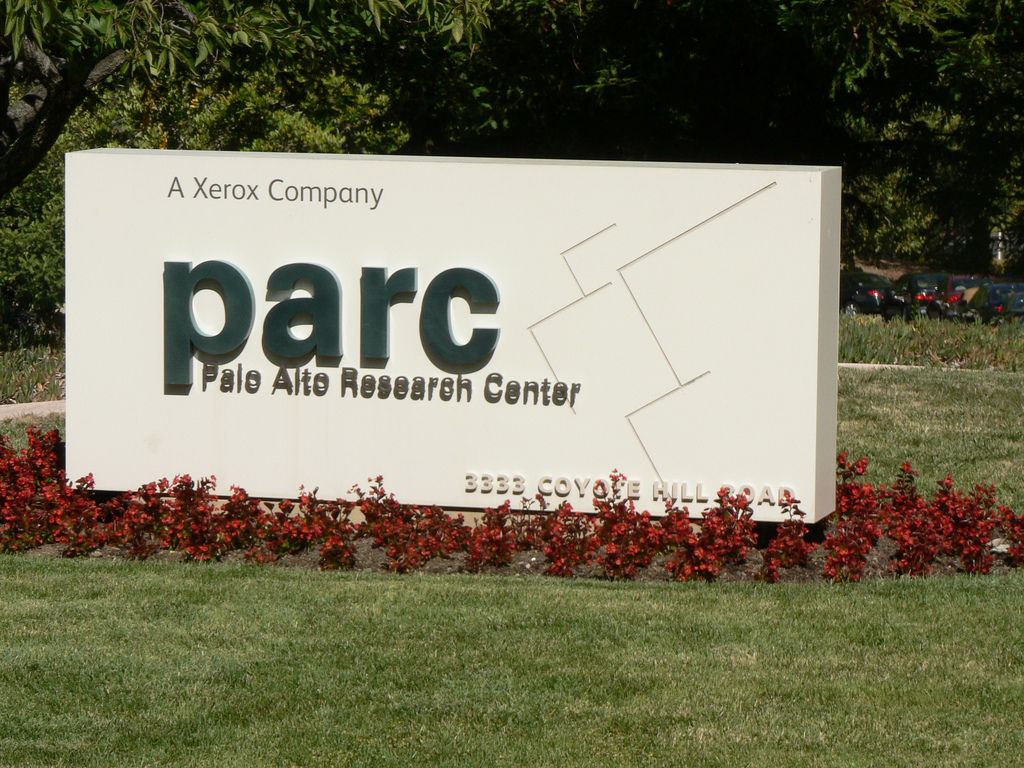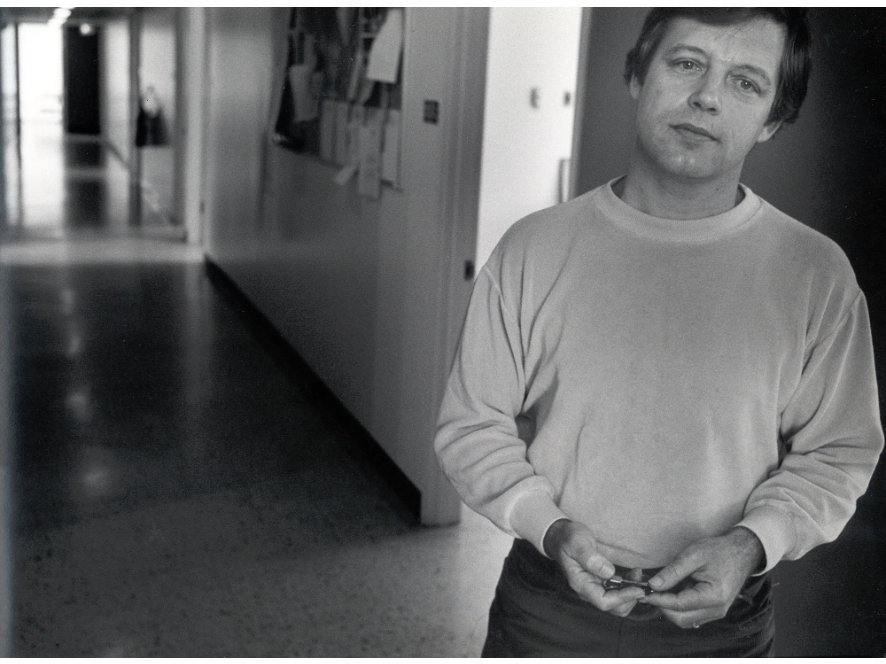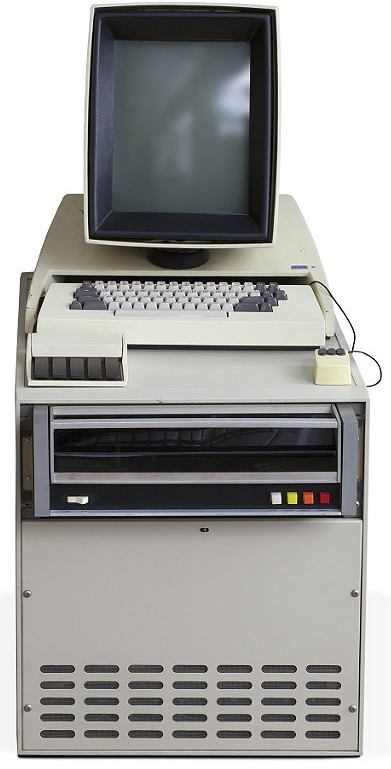Alan Kay: What made Xerox PARC special and who else is like them today
- Transfer

There is a good book (pretty much the only good book) worth reading about the research community, of which PARC was a part, Mitchell Waldrop's DREAM MACHINE ( which we also translate to Habré , lane comment ). There you will learn about ARPA (up to “D”, D-ARPA) IPTO (technical information processing office), created in 1962 by the dreamer Joseph Carl Robnett Liklider (translation of one , two ), who created a research community of 15 or 16 “projects” mainly in universities, but also in several places such as RAND Corp, Lincoln Labs, Miter, BBN, SDC, etc.
We had this vision:"The fate of computers is to become interactive, intelligent amplifiers for all people who live in a world where everyone is connected to a global network . "
Our principles were:
- Vision / Dreams, Not Goals
- Invest in people, not in projects - scientists find problems, not sponsors. Therefore, for many reasons, you must have the best researchers.
- Finding problems instead of solving problems
- Key work steps (milestones), not deadlines
- This is “baseball”, not “golf”. If you get 35% successful results in high-risk areas - this is very cool. Failure is not a failure, but an overhead of successful results. (As in baseball, “mistake” is a failure in what is technically possible.)
- It is about the formation of "computer material" for human purposes relating to the mentioned concept. In most cases, this required researchers to develop and create almost everything, including most of the hardware, as well as various mainframes, and practically all the necessary software (OS and programming languages, etc.). Many ARPA researchers were fairly fluent in both HW (hardware) and SW (software) (although they usually owned something better than one). This was made for a fairly homogeneous culture of computation and great synergy in most projects.
- The above contradicts the idea of common sense , according to which "computer scientists should not try to create their own tools (because of the endless Turing mire)." The idea of ARPA was a second-order concept: “if you can create your own tools, HW and SW, then you must do it!”. The idea was that if you are going to solve important, new problems, you just need to contribute to change in order to get all the necessary tools, partly because it is embedded in the meaning of the “new”, and partly because finding workarounds for a material supplier who is in the wrong paradigm, kills research thinking.
- An important part of the research results are the researchers themselves . This broadens the baseball idea of human development. Masters usually recognized people who “seemed interesting” and were not allowed to judge them until a sufficient amount of time passed. The ARPA community spawned many researchers who ultimately solved most of the many problems of personal computers and networks.
PARC was the last of these “ARPA projects” to be created, and due to financial changes due to the Vietnam War, received its funding from a corporation, not from ARPA-IPTO. But almost all computer scientists at PARC grew up on ARPA projects in the 60s, and Bob Taylor, who created computer research at PARC, was the third director of ARPA-IPTO.

Bob Taylor
Bob's goal was to "realize the dream of ARPA."
PARC focused on the wealth of talent, ability, vision, confidence and cooperation. There was no real management structure, so everything was organized in such a way as to allow researchers to “propose”, “commit” and “comment” in a more or less orderly manner.
Quite a few inventions of PARC are most famous for being made in the first 5 years by a rather small pool of researchers (Butler Lampson claims that there were about 25 people, and this seems to be the case).
 One of the most interesting ideas in PARC was this idea: “every invention must be designed for 100 users”. Therefore, if you use a programming language or DTP word processor, etc., it must be documented and used by hundreds of people. If you are making a personal computer, you should be able to make 100 of these. If it is Ethernet, it must connect to 100 devices, etc.
One of the most interesting ideas in PARC was this idea: “every invention must be designed for 100 users”. Therefore, if you use a programming language or DTP word processor, etc., it must be documented and used by hundreds of people. If you are making a personal computer, you should be able to make 100 of these. If it is Ethernet, it must connect to 100 devices, etc. There was no software religion. All and sundry made languages, operating systems, applications, etc., which, in their opinion, could promote their research.
Iron was more difficult because of the time and cost required for replicating, executing and creating new projects. In practice, it worked quite easily most of the time through a small number of meetings and brilliant minds of HW, like Chuck Thacker. Several things were agreed, such as disk sectors and simple Ethernet protocols, etc., mainly to make more important things more specific. In practice, PARC has developed and launched many Alto projects (about 2000 Altos were built), MAXC, Dolphins, Dorados, NoteTakers, Dandelions, etc. for about 10 years - that is, quite a lot.
There were key personalities. For example, PARC would not have succeeded without Bob Taylor, Butler Lampson, Chuck Thacker, and several others.
I would call the first 5 years “spectacularly idyllic.” And the next 5 years are “very productive, but gradually destructive” (the latter is associated with many changes in the management of Xerox and the inability to cope either with the future or with the possible great fate of the company).
About #philtech
#philtech (технологии + филантропия) — это открытые публично описанные технологии, выравнивающие уровень жизни максимально возможного количества людей за счёт создания прозрачных платформ для взаимодействия и доступа к данным и знаниям. И удовлетворяющие принципам филтеха:
1. Открытые и копируемые, а не конкурентно-проприетарные.
2. Построенные на принципах самоорганизации и горизонтального взаимодействия.
3. Устойчивые и перспективо-ориентированные, а не преследующие локальную выгоду.
4. Построенные на [открытых] данных, а не традициях и убеждениях
5. Ненасильственные и неманипуляционные.
6. Инклюзивные, и не работающие на одну группу людей за счёт других.
Акселератор социальных технологических стартапов PhilTech — программа интенсивного развития проектов ранних стадий, направленных на выравнивание доступа к информации, ресурсам и возможностям. Второй поток: март–июнь 2018.
Чат в Telegram
Сообщество людей, развивающих филтех-проекты или просто заинтересованных в теме технологий для социального сектора.
#philtech news
Телеграм-канал с новостями о проектах в идеологии #philtech и ссылками на полезные материалы.
Подписаться на еженедельную рассылку

#philtech (технологии + филантропия) — это открытые публично описанные технологии, выравнивающие уровень жизни максимально возможного количества людей за счёт создания прозрачных платформ для взаимодействия и доступа к данным и знаниям. И удовлетворяющие принципам филтеха:
1. Открытые и копируемые, а не конкурентно-проприетарные.
2. Построенные на принципах самоорганизации и горизонтального взаимодействия.
3. Устойчивые и перспективо-ориентированные, а не преследующие локальную выгоду.
4. Построенные на [открытых] данных, а не традициях и убеждениях
5. Ненасильственные и неманипуляционные.
6. Инклюзивные, и не работающие на одну группу людей за счёт других.
Акселератор социальных технологических стартапов PhilTech — программа интенсивного развития проектов ранних стадий, направленных на выравнивание доступа к информации, ресурсам и возможностям. Второй поток: март–июнь 2018.
Чат в Telegram
Сообщество людей, развивающих филтех-проекты или просто заинтересованных в теме технологий для социального сектора.
#philtech news
Телеграм-канал с новостями о проектах в идеологии #philtech и ссылками на полезные материалы.
Подписаться на еженедельную рассылку
